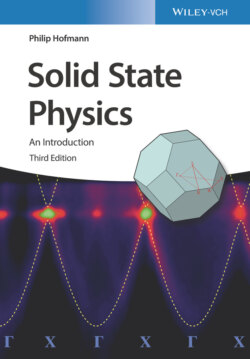Читать книгу Solid State Physics - Philip Hofmann - Страница 36
2 Bonding in Solids
ОглавлениеAfter studying the structures of crystals, we now discuss the different mechanisms that lead to bonding between atoms such that they form these structures. We will encounter different scenarios such as ionic, covalent, or metallic bonding. It has to be kept in mind, however, that these are only idealized limiting cases. More often than not, mixed bonding types are encountered – for example, a combination of metallic and covalent bonding in the transition metals.
As in conventional chemistry, only a fraction of the electrons, the so‐called valence electrons, participate in the bonding. These are the electrons in the outermost shell(s) of an atom. The electrons in the inner shells, or core electrons, are bound so tightly to the nucleus that their energies and wave functions are hardly influenced by the presence of other atoms in their neighborhood.
